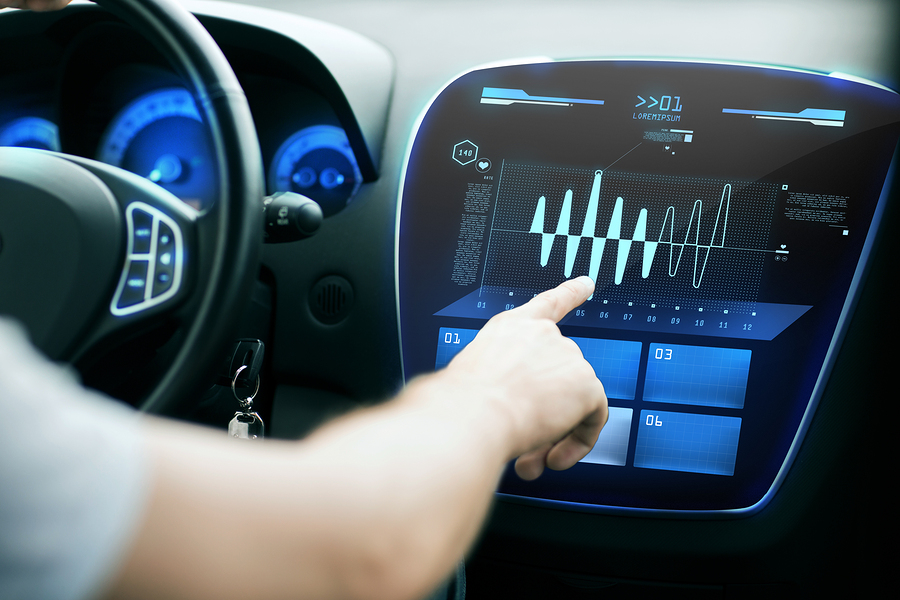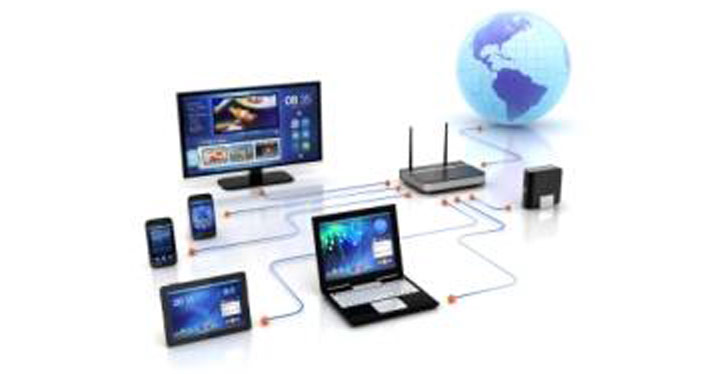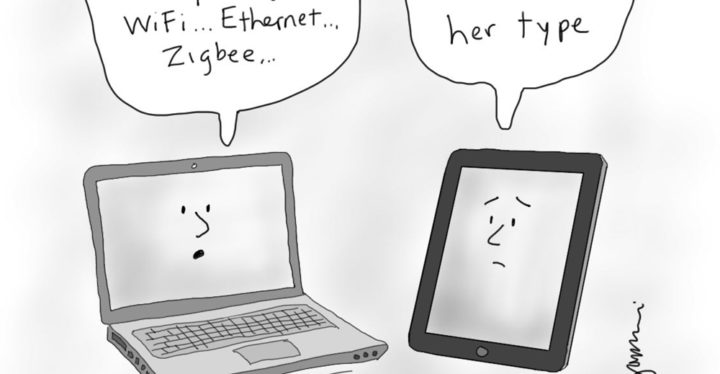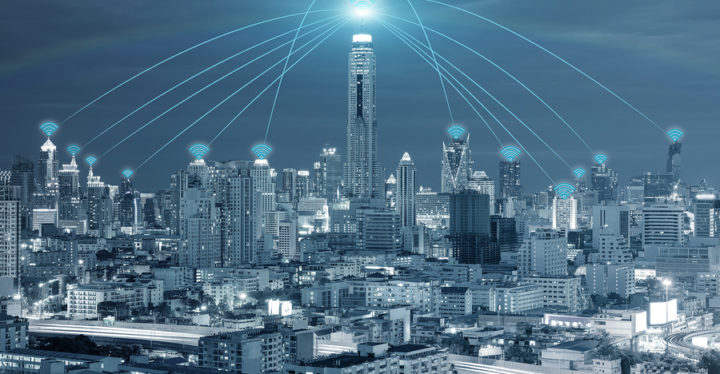
The automobile was not thought of as a high-technology device during the last 50 years. “High-tech” meant Silicon Valley—computers, microcircuits, advanced networking, smartphones, things that were defined by advanced electronics and software. Cars may have been high-tech by the standards of mechanical engineers, with “exotic” materials such as aluminum replacing steel and iron in the engine block and car body, but they did not define any sort of cutting-edge technology.
This has changed. Electronics have become the dominant force driving innovation in automotive technology. Silicon Valley is driving (pun intended) the 21st century automobile, with firms like Google, Tesla, and (it’s rumored) Apple, creating autonomous cars that are in turn connected to the Internet to share and exchange a wide variety of data. The so-called “Internet of Things” will really be the “Internet of cars” by the early 2020s.
Cars will become mobile data centers, with supercomputer levels of processing power. Such processing power requires ultra-high performance networks, and the IEEE 802 LANMAN Standards Committee has developed a variety of solutions specifically directed at the automobile.
How did cars go from being the province of mechanical engineers to something that has millions of lines of computer code running on dozens of processors? If we step back in time to the middle 1950s, the average car had no electronics. The car had electrical systems, of course, but these were purely electrical or electromechanical (i.e., head lights, tail lights, brake lights), and had not changed much since the dawn of the automobile. A vacuum-tube AM radio was likely the only electronic device in a 1950s car, and radios were costly options in those days. Some luxury cars had electric-eye automatic headlight dimmers or under-dash record players (!), but that was about it.
Standards in automobiles were either:
- Manufacturer-specific (standards set within a car maker, e.g. General Motors, Volkswagen, or Honda) for particular items,
- De facto standards (standards adopted across manufacturers due to market acceptance),
- Standards bodies created to support the auto industry, or
- Standards set by legislative bodies; these were usually directed at safety or the environment.
In the 1960s, electronics became a larger part of the automobile, as was occurring in every technology area, especially consumer electronics. Simple electronic intermittent windshield wipers, cruise control, 8-track tape and cassette systems, EFI (electronic fuel injection), and sequential tail lights appeared in the late 1960s. In many cases, these early electronic systems were notoriously unreliable. Car makers were learning how to design and build systems that could survive in what was considered one of the most hostile environments for electronics—automobiles.
By the 1980s, AM/FM cassette stereos, cruise control, heated seat controls, in-car mobile phones, preset mirror and seat position memory, and electronic engine, powertrain, and brake control systems were being introduced. The first automotive “network” the CAN (controller area network) bus, was introduced by Robert Bosch GmBH in 1981. The CAN bus tied the various control electronics together via a 1 Mb/s serial data bus. CAN quickly became the dominant in-car network.
The 1990s saw much more sophisticated in-car entertainment, with DVD players with multiple displays, multichannel audio systems, remote door lock/unlock, airbags, and driver personalization (i.e., memory mirrors, seats, radio stations). The engine, drivetrain, and brake electronics were also becoming much more powerful.
By 2010, the average car had around 45 microprocessors, with some high-end cars having over 130. Advanced driver assist systems (ADAS) provided intelligent cruise control, lane departure warnings, proximity alerts (i.e., following too close, backing into an object), navigation, traffic alerts, night vision, heads-up displays, radar (for safe driving in the fog)—the modern car seemed more like an advanced aircraft than something to be driven to the grocery store. ADAS were the stepping stone to the fully-autonomous car.
All of this functionality came with a big problem. The automotive networks developed by the car industry had not kept pace with the needs of these advanced systems. The 1 Mb/s CAN bus and its follow-on, the 10Mb/s FlexRay bus, simply couldn’t provide the performance required to support ADAS and infotainment. The electronic architecture of the car had become an unsustainable mess, with many different “networks” cross connected in crazy ways to try and work around the deficiencies of the outmoded automotive network technology. The network performance would have to improve dramatically to make self-driving cars a reality.
Silicon Valley came to the rescue, in the form of a wake-up call to the auto industry. Electric car start-up Tesla had been using Ethernet in the Model S since its introduction in 2011, as had Google in its test autonomous vehicles. The most advanced vehicles on the planet were not being built by traditional car companies. Tesla couldn’t build cars fast enough to satisfy demand. Something needed to be done, and fast.
In 2012, a group of visionaries from the automotive industry, working with long-time experts in the IEEE 802.3 Ethernet working group, started a project for a special version of 1Gb/s Ethernet specifically tailored for the automotive market. The project involved individuals from major auto companies, Tier 1 automotive suppliers (the major companies that build subsystems for cars), and the major Ethernet semiconductor vendors. IEEE Std 802.3bp-2016 was approved in June 2016 and is being designed into the cars that will appear in the early 2020s.
But there is much more to the story. The 802.3bp project generated so much interest that the P802.3bu Power over Data Lines project was started to provide DC power over the same single twisted wire pair used for 802.3bp-2016. P802.3bu is expected to be completed in early 2017. A proprietary 100Mb/s Ethernet solution, the Open Alliance BroadR-Reach, was brought into the IEEE 802.3 Ethernet working group and standardized as 802.3bw-2015. In addition, work on a 1Gb/s solution on plastic optical fiber (POF) is being done in P802.3bv, with an expected completion date in 2017.
The 802.1 working group’s Audio/Video Bridging/Time Sensitive Networks (AVB/TSN) Task Force has been adding time awareness to Ethernet networks for a number of years. 802.3br-2016 provides hardware mechanisms to support some functions provided by 802.1 TSN standards, e.g. 802.1 qbu for high-priority traffic. Many cars will have an on-board 802.11 Wi-Fi system to allow the user to use their smart phone for navigation, entertainment, and hands-free calling, as well as surfing the web (hopefully passengers only).
These IEEE 802 standards will allow the designers of future cars to create a true networked architecture, with all data available everywhere. The block diagram of an automotive system will look just like the block diagram of an enterprise network—and that’s the point: to use the vast array of knowledge, experience, and software that runs networks around the world to run the networks in your car.
Tier 1 suppliers will no longer need to create separate solutions for each car company. Instead, they can build common hardware platforms with IEEE 802 networking that can be customized by software. Costs will go down and reliability will go up, which will make the finance department smile (perhaps for the first time). Designers within car companies can pick and choose, just like their counterparts in mainstream networking, the best solution from a number of vendors.
The automotive industry has always had standards of one kind or another. Moving forward, IEEE 802 standards will be a big part of the leap to the truly autonomous car.
 Steven B. Carlson
Steven B. Carlson
scarlson@ieee.org
Steven B. Carlson is the President of High Speed Design, Inc., a Portland, Oregon-based consulting company. Mr. Carlson has over 40 years’ experience in embedded control systems and networking for the entertainment and energy management industries. He currently serves as the Chair of the IEEE P802.3bp 1000BASE-T1 Task Force, the P802.3bw 100BASE-T1 Task Force, and is the Executive Secretary of the IEEE 802.3 Ethernet Working Group. Mr. Carlson previously served as the Chair of IEEE 802.3af-2003 DTE Power via MDI project, usually referred to as “Power over Ethernet,” the IEEE 802.3bf – 2011 Time Sync Task Force and was a founder of the Entertainment Services and Technology Association’s Technical Standards Program, ANSI E1-Entertainment Technology.




